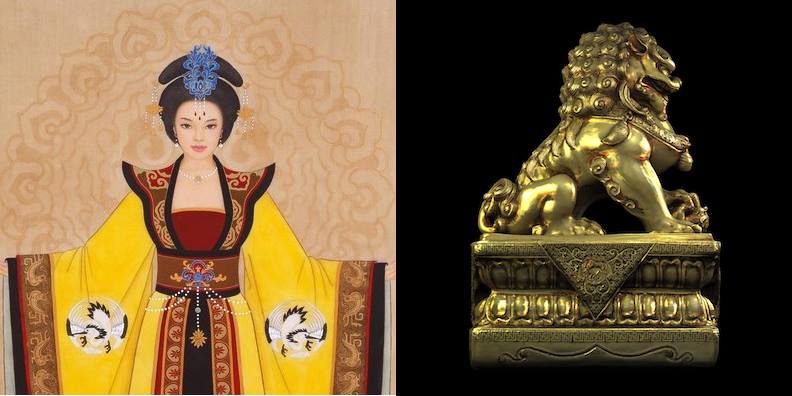Medieval China. The Tang dynasty has been toppled and from the chaos rises an incredible woman with a monastic courtier helping to pull the strings. The brilliant, tenacious, and fearless Wu Zetian (624-705) was China’s first and only empress and her alliance with one of the most powerful monks of the day, Huayan preceptor Fazang (643-712), was a theocratic marriage unlike any other. Mindful of Confucian bias against her and in search of religious legitimation, she styled herself as a “chakravartin,” a Buddhist monarch, and Fazang helped sanction her sovereignty, promote her reputation as a bodhisattva, and undermine and suppress her enemies both in and beyond China.
Fazang personally taught to Wu Zetian a performative metaphor using a lion made of gold. The lion was the cosmos and its various parts the phenomena of reality. The gold represented emptiness. The lion clearly had a mane, teeth, claws and eyes, but the essential “what” of the lion, gold, was the same. Differences are all superficial in the integrated, interconnected universe of Buddhism.
This alliance ended unhappily when Fazang threw his lot in with his patron’s conspirators. In 705 he forced her to relinquish the Dragon Throne. For a while, this throne had been straddled by a true phoenix. On her deathbed, the former empress felt hurt and betrayed by Fazang, whom she had trusted for so long. Yet Fazang saw himself as saving Buddhism from being identified by the upcoming emperors as a rogue religion for a woman who would be seen by Confucians, however justly or unjustly, as an illegitimate usurper.
Their tragic story is a classic and emotional tale of Buddhism’s pressure under Confucianism, the “damned-if-you-do-damned-i
Explore more with us at Buddhistdoor Global, your doorway to the Buddhist world and your source for Dharma journalism. Join our BDG Group on Facebook and follow our blog to brighten up your week with more postcards and light snippets of spiritual reflections!

